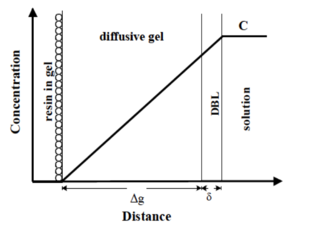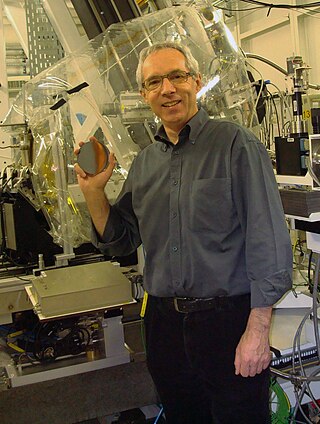
Chemical waste is any excess, unused, or unwanted chemical, especially those that cause damage to human health or the environment. Chemical waste may be classified as hazardous waste, non-hazardous waste, universal waste, or household hazardous waste. Hazardous waste is material that displays one or more of the following four characteristics: ignitability, corrosivity, reactivity, and toxicity. This information, along with chemical disposal requirements, is typically available on a chemical's Material Safety Data Sheet (MSDS). Radioactive waste requires special ways of handling and disposal due to its radioactive properties. Biohazardous waste, which may contain hazardous materials, is also handled differently.

p-Phenylenediamine (PPD) is an organic compound with the formula C6H4(NH2)2. This derivative of aniline is a white solid, but samples can darken due to air oxidation. It is mainly used as a component of engineering polymers and composites like kevlar. It is also an ingredient in hair dyes and is occasionally used as a substitute for henna.
In organic chemistry, ozonolysis is an organic reaction where the unsaturated bonds are cleaved with ozone. Multiple carbon–carbon bond are replaced by carbonyl groups, such as aldehydes, ketones, and carboxylic acids. The reaction is predominantly applied to alkenes, but alkynes and azo compounds are also susceptible to cleavage. The outcome of the reaction depends on the type of multiple bond being oxidized and the work-up conditions.
Polymer stabilizers are chemical additives which may be added to polymeric materials, such as plastics and rubbers, to inhibit or retard their degradation. Common polymer degradation processes include oxidation, UV-damage, thermal degradation, ozonolysis, combinations thereof such as photo-oxidation, as well as reactions with catalyst residues, dyes, or impurities. All of these degrade the polymer at a chemical level, via chain scission, uncontrolled recombination and cross-linking, which adversely affects many key properties such as strength, malleability, appearance and colour.

An antiozonant, also known as anti-ozonant, is an organic compound that prevents or retards damage caused by ozone. The most important antiozonants are those which prevent degradation of elastomers like rubber. A number of research projects study the application of another type of antiozonants to protect plants as well as salmonids that are affected by the chemicals.

Per- and polyfluoroalkyl substances (PFAS or PFASs) are a group of synthetic organofluorine chemical compounds that have multiple fluorine atoms attached to an alkyl chain. An early definition, from 2011, required that they contain at least one perfluoroalkyl moiety, –CnF2n+1–. Beginning in 2021, the Organisation for Economic Co-operation and Development (OECD) expanded their terminology, stating that "PFASs are defined as fluorinated substances that contain at least one fully fluorinated methyl or methylene carbon atom (without any H/Cl/Br/I atom attached to it), i.e., with a few noted exceptions, any chemical with at least a perfluorinated methyl group (–CF3) or a perfluorinated methylene group (–CF2–) is a PFAS."

Genetically modified fish are organisms from the taxonomic clade which includes the classes Agnatha, Chondrichthyes and Osteichthyes whose genetic material (DNA) has been altered using genetic engineering techniques. In most cases, the aim is to introduce a new trait to the fish which does not occur naturally in the species, i.e. transgenesis.

Microplastics are fragments of any type of plastic less than 5 mm (0.20 in) in length, according to the U.S. National Oceanic and Atmospheric Administration (NOAA) and the European Chemicals Agency. They cause pollution by entering natural ecosystems from a variety of sources, including cosmetics, clothing, food packaging, and industrial processes.

Ethylene diurea (EDU) is an organic compound with the formula (CH2NHCONH2)2. It is a white solid.
Pre-spawn mortality is a phenomenon where adult coho salmon, Oncorhynchus kisutch, die before spawning when returning to freshwater streams to spawn. It is also known as Urban Runoff Mortality Syndrome in more recent studies. This occurrence has been observed in much of the Puget Sound region of the Pacific Northwest. During fall migration, salmonids pass through urban watersheds which are contaminated with stormwater runoff. As the coho salmon pass through these waters, many will show symptoms of lethargy, loss of equilibrium and disorientation, and die within a few hours of showing these symptoms. These symptoms and behaviors are prevalent after rain events. Mortality often occurs before salmon have the opportunity to spawn, which is determined by cutting open female carcasses and observing for unfertilized eggs. Rates of pre-spawn mortality could impact the local salmon populations. Based on model projections, if rates continue, populations of coho salmon could become extinct within the next few decades.

The diffusive gradients in thin films (DGT) technique is an environmental chemistry technique for the detection of elements and compounds in aqueous environments, including natural waters, sediments and soils. It is well suited to in situ detection of bioavailable toxic trace metal contaminants. The technique involves using a specially-designed passive sampler that houses a binding gel, diffusive gel and membrane filter. The element or compound passes through the membrane filter and diffusive gel and is assimilated by the binding gel in a rate-controlled manner. Post-deployment analysis of the binding gel can be used to determine the time-weighted-average bulk solution concentration of the element or compound via a simple equation.

The 25-NB (25x-NBx) series, sometimes alternatively referred to as the NBOMe compounds, is a family of serotonergic psychedelics. They are substituted phenethylamines and were derived from the 2C family. They act as selective agonists of the serotonin 5-HT2A receptor. The 25-NB family is unique relative to other classes of psychedelics in that they are, generally speaking, extremely potent and relatively selective for the 5-HT2A receptor. Use of NBOMe series drugs has caused many deaths and hospitalisations since the drugs popularisation in the 2010s. This is primarily due to their high potency, unpredictable pharmacokinetics, and sellers passing off the compounds in the series as LSD.

Aminoxyl denotes a radical functional group with general structure R2N–O•. It is commonly known as a nitroxyl radical or a nitroxide, however IUPAC discourages the use of these terms, as they erroneously suggest the presence of a nitro group. Aminoxyls are structurally related to hydroxylamines and N-oxoammonium salts, with which they can interconvert via a series of redox steps.

N-Isopropyl-N′-phenyl-1,4-phenylenediamine (often abbreviated IPPD) is an organic compound commonly used as an antiozonant in rubbers. Like other p-phenylenediamine-based antiozonants it works by virtue of its low ionization energy, which allows it to react with ozone faster than ozone will react with rubber. This reaction converts it to the corresponding aminoxyl radical (R2N–O•), with the ozone being converted to a hydroperoxyl radical (HOO•), these species can then be scavenged by other antioxidant polymer stabilizers.
Rubber pollution, similar to plastic pollution, occurs in various environments, and originates from a variety of sources, ranging from the food industry processing chain to tire wear. Synthetic and natural rubber dust and fragments now occur in food, airborne as particulates in air pollution, hidden in the earth as soil pollution, and in waterways, lakes and the sea.

Elsie M. Sunderland is a Canadian toxicologist and environmental scientist and the Gordon McKay Professor of Environmental Chemistry at Harvard University. She studies processes through which human activities increase and modify pollutants in natural ecosystems and living systems.

Urs von Gunten is a Swiss environmental chemist and a professor at EPFL. He is known for his research in the fields of drinking water quality and water treatment.

4-Aminodiphenylamine is a diphenylamine with an additional amine substituent. This dimer of aniline has various industrial uses, including as a hair dye ingredient, but also has raised concerns about toxicity by skin contact. It is also a starting material for the synthesis of 6PPD, an antiozonant for various rubber products. A colorimetric test for the quantitative analysis of nitrite, at levels below 100 nanograms per milliliter, is based on nitrite-catalyzed coupling of 4-aminodiphenylamine with N,N-dimethylaniline.

Hexa(methoxymethyl)melamine (HMMM) is a hemiaminal ether commonly used as a crosslinking agent in the production of coatings and rubber items. It is produced via the reaction of melamine with formaldehyde and excess methanol, with the later also acting as a solvent for the reaction. It can be considered as a monomeric intermediate in the formation of melamine resin.

Alain Manceau, born September 19, 1955, is a French environmental mineralogist and biogeochemist. He is known for his research on the structure and reactivity of nanoparticulate iron and manganese oxides and clay minerals, on the crystal chemistry of strategic metals and rare-earth elements in marine sediments, and on the structural biogeochemistry of mercury in natural organic matter, animals, and humans.




















